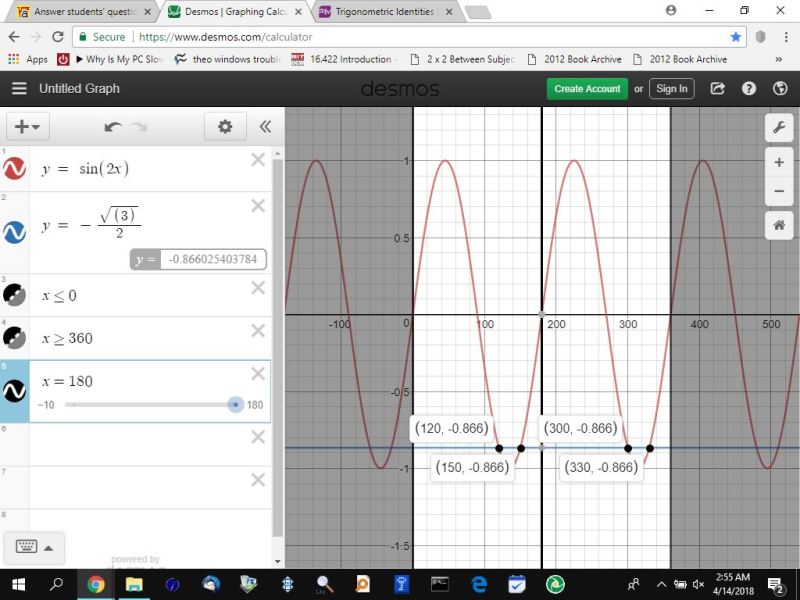120, 150, 300, 330 degrees.
note that -.866 on the graph is the decimal equivalent of -sqrt(3)/2 rounded to 3 decimal digits.

this could also be solved algebraically.
you have sin(2x) = -sqrt(3)/2.
use your calculator to find that 2x = -60 degrees.
that would be in the fourth quadrant.
the equivalent positive angle is -60 + 360 = 300 degrees.
the equivalent angle in the first quadrant is 360 - 300 = 60 degrees.
the sine is negative in the third and fourth quadrant, so your equivalent angle in the third quadrant is 240 and your equivalent angle in the fourth quadrant is 300 degrees.
you have 2x = 140 and 2x = 300.
solve for x to get x = 120 and 150.
now you need to understand frequencies and periods of the sine function.
the frequency of sin(2x) is 2.
the period is 360 / 2 = 180.
that means that sin(2x) does a full cycle in 180 degrees rather than 360 degrees.
that means that the full sine wave will repeat 2 time every 360 degrees.
you have 120 and 150 degrees.
that's the first full cycle.
the second full cycle will be 180 degrees more than 120 and 180 degrees more than 150.
that gets you to 120, 150, 300, 330 degrees.
the graph confirms this to be true.